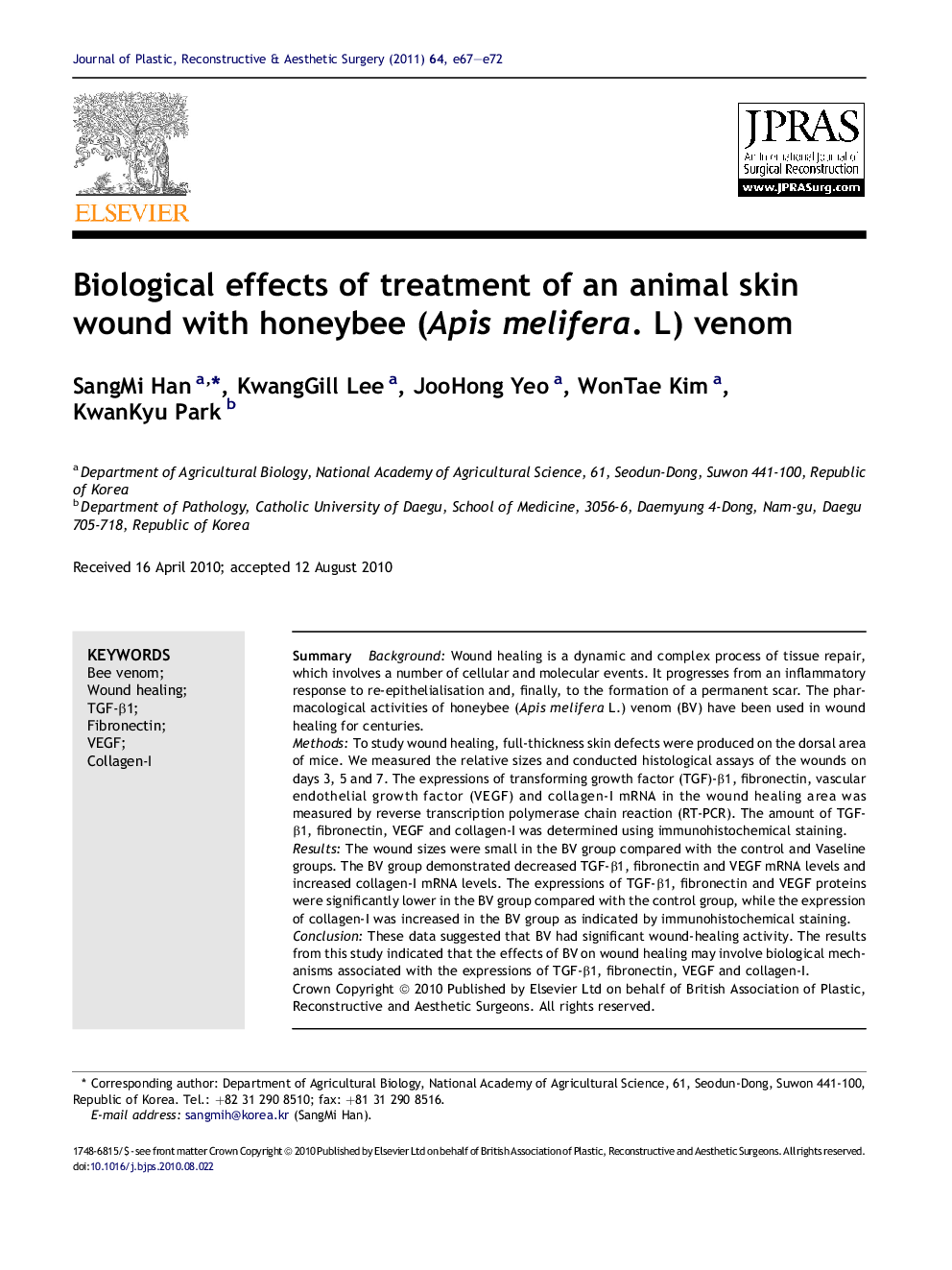| Article ID | Journal | Published Year | Pages | File Type |
|---|---|---|---|---|
| 4119143 | Journal of Plastic, Reconstructive & Aesthetic Surgery | 2011 | 6 Pages |
SummaryBackgroundWound healing is a dynamic and complex process of tissue repair, which involves a number of cellular and molecular events. It progresses from an inflammatory response to re-epithelialisation and, finally, to the formation of a permanent scar. The pharmacological activities of honeybee (Apis melifera L.) venom (BV) have been used in wound healing for centuries.MethodsTo study wound healing, full-thickness skin defects were produced on the dorsal area of mice. We measured the relative sizes and conducted histological assays of the wounds on days 3, 5 and 7. The expressions of transforming growth factor (TGF)-β1, fibronectin, vascular endothelial growth factor (VEGF) and collagen-I mRNA in the wound healing area was measured by reverse transcription polymerase chain reaction (RT-PCR). The amount of TGF-β1, fibronectin, VEGF and collagen-I was determined using immunohistochemical staining.ResultsThe wound sizes were small in the BV group compared with the control and Vaseline groups. The BV group demonstrated decreased TGF-β1, fibronectin and VEGF mRNA levels and increased collagen-I mRNA levels. The expressions of TGF-β1, fibronectin and VEGF proteins were significantly lower in the BV group compared with the control group, while the expression of collagen-I was increased in the BV group as indicated by immunohistochemical staining.ConclusionThese data suggested that BV had significant wound-healing activity. The results from this study indicated that the effects of BV on wound healing may involve biological mechanisms associated with the expressions of TGF-β1, fibronectin, VEGF and collagen-I.
